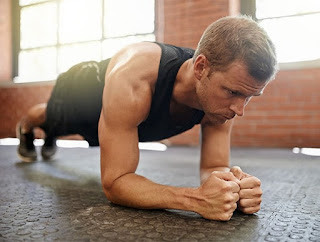Relying on running to build muscles fit for a marathon will take a lot of time to accomplish. Building and strengthening specific muscle groups is necessary to avoid injuries or make sure that your body is strong enough to withstand everything a marathon can throw at you. Here are the top on-running exercise runners can do while training for a marathon.
Planks
Planks are great at working several groups of muscles at a time, the most basic one already targets your core, lower back, and shoulders. They are great for building endurance, stretching out tired muscles, and improving flexibility. It’s also a great way to fix improper posture.
Russian twists
Russian twists target your obliques and your abs. Having a strong core helps runners by stabilizing their balance, posture, and overall control. This prevents unnecessary movements which use up energy which marathon runners need to conserve during the race.
Back extensions
Back extensions work your lower back, glutes, shoulders, and your middle back. Strengthening the lower and middle back equates to better shock absorption for your upper body. For a lot of people, standing for an extended period already gives them back problems. Running for a few hours is impossible with a weak back.
Overhead forward lunge
This workout develops your quadriceps, hamstrings, glutes, shoulders, and your core. This muscle-building routine targets key areas in the legs, upper, and midbody that are usually strained during a marathon. Toning your leg muscles also helps lengthen your stride and improve single-leg balance.
Steven Rindner is a business and corporate development executive with an experience in media, technology, real estate services, and healthcare businesses. He is also a marathoner. For more reads about running, visit this blog.
 |
Image source: zoomzee.org
|
Planks are great at working several groups of muscles at a time, the most basic one already targets your core, lower back, and shoulders. They are great for building endurance, stretching out tired muscles, and improving flexibility. It’s also a great way to fix improper posture.
Russian twists
Russian twists target your obliques and your abs. Having a strong core helps runners by stabilizing their balance, posture, and overall control. This prevents unnecessary movements which use up energy which marathon runners need to conserve during the race.
 |
Image source: menshealth.co.uk
|
Back extensions work your lower back, glutes, shoulders, and your middle back. Strengthening the lower and middle back equates to better shock absorption for your upper body. For a lot of people, standing for an extended period already gives them back problems. Running for a few hours is impossible with a weak back.
Overhead forward lunge
This workout develops your quadriceps, hamstrings, glutes, shoulders, and your core. This muscle-building routine targets key areas in the legs, upper, and midbody that are usually strained during a marathon. Toning your leg muscles also helps lengthen your stride and improve single-leg balance.
Steven Rindner is a business and corporate development executive with an experience in media, technology, real estate services, and healthcare businesses. He is also a marathoner. For more reads about running, visit this blog.


